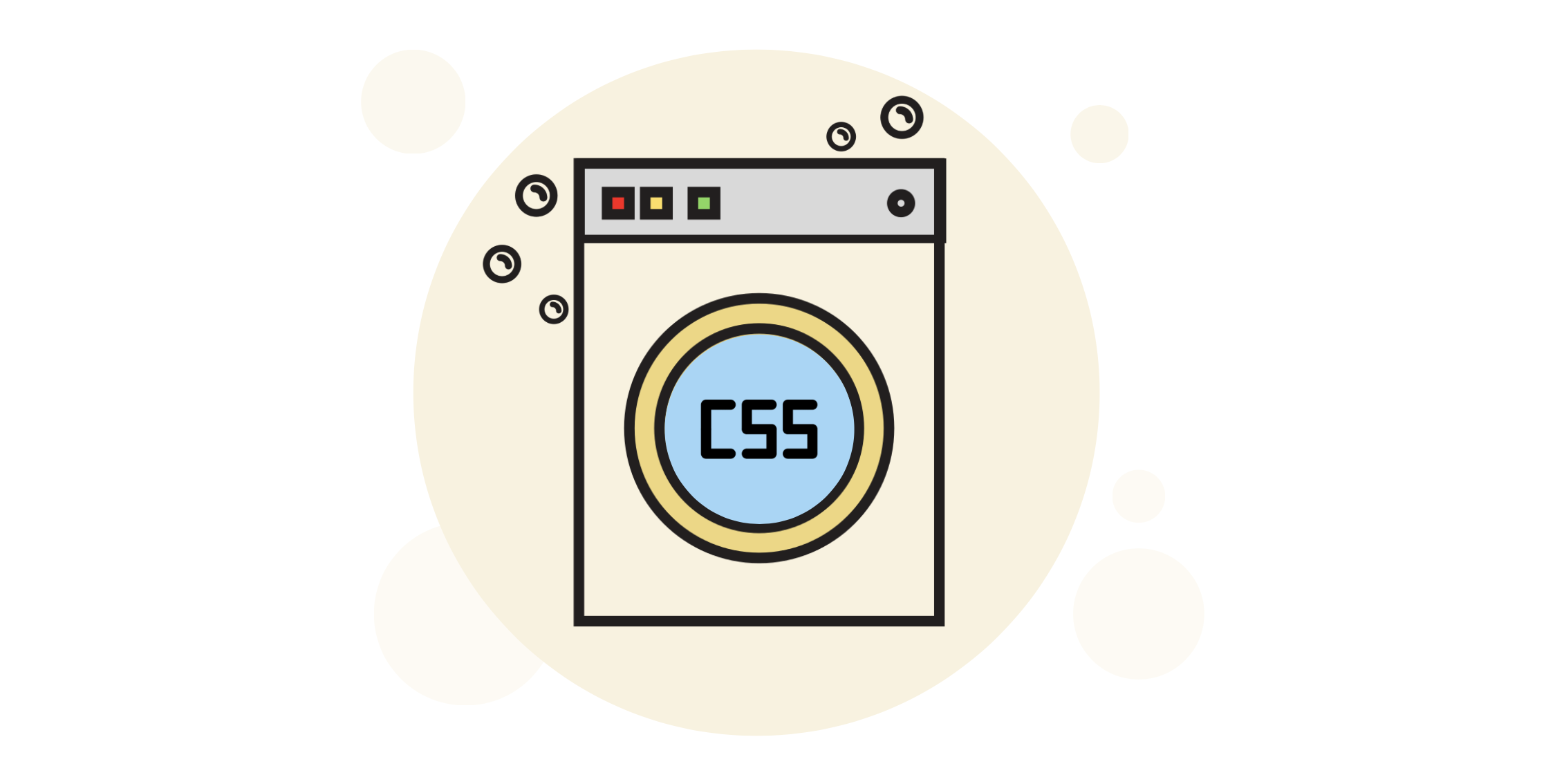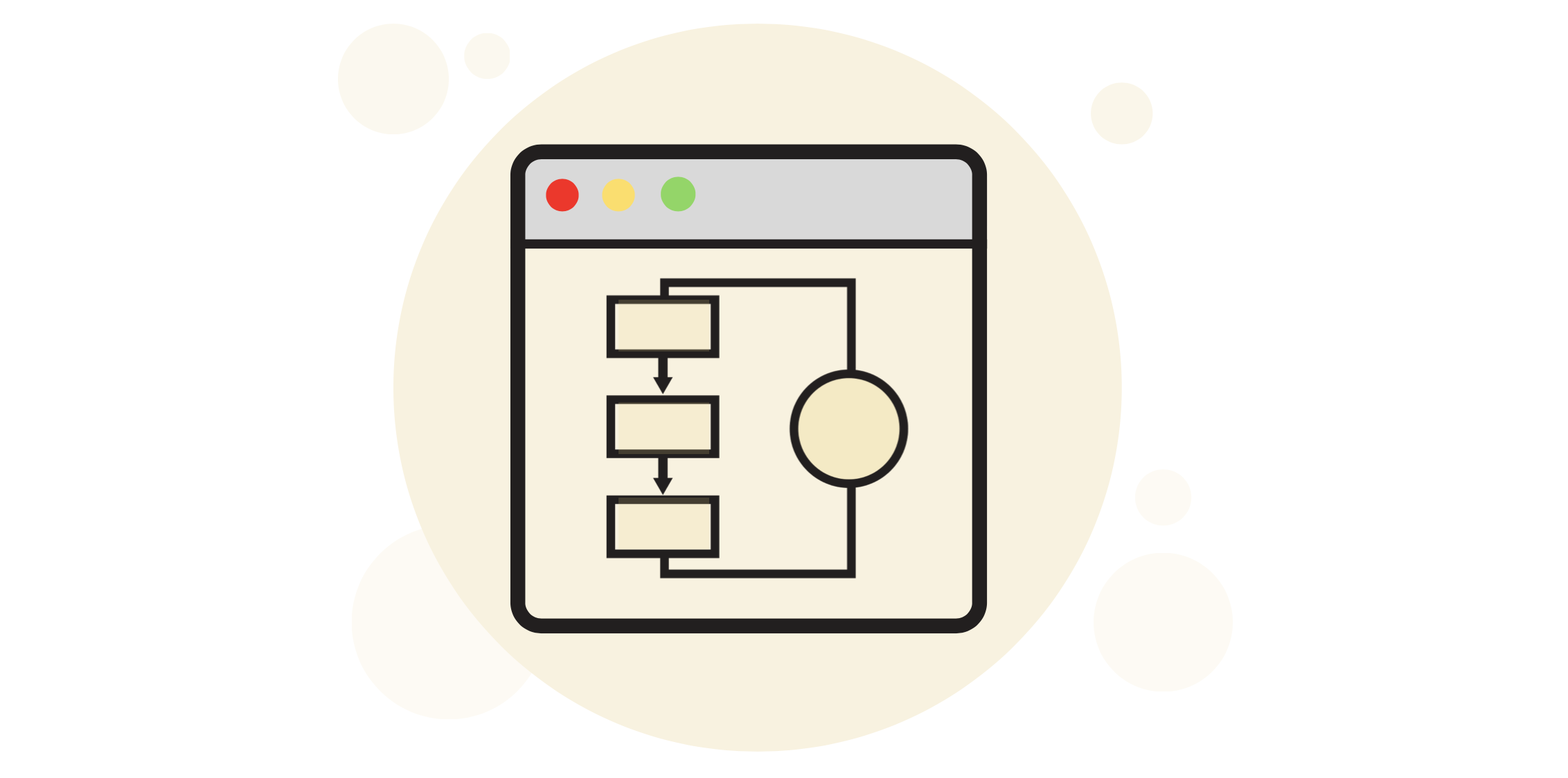Table of Contents
SASS for CSS: Advance your frontend skills with CSS preprocessor
If you’re a frontend developer, you know that CSS can be fun, but as your stylesheets get larger, they get harder to maintain and organize. That’s where CSS preprocessors like SASS come in to save the day. SASS empowers frontend developers to advance their frontends skills with unique features that extend CSS capabilities.
Today we will walk you through a beginner’s intro to SASS and CSS preprocessors to get you familiar with this game-changing tool.
Take your CSS skills to the next level
Get up-to-date on all the features you need to be an advanced front-end developer.
SASS for CSS: Advanced Frontend Development
What is SASS?#
SASS (Syntactically Awesome Style Sheets) is a scripting language and CSS preprocessor that compiles into CSS to make faster, easier, more elegant stylesheets. SASS adds new features and tools on top of basic CSS help you organize stylesheets for large codebases in a maintainable, useful way. By extending CSS code, SASS builds off of everything you love about CSS and makes large codebases user-friendly.
What is a CSS preprocessor?#
SASS is a tool called a CSS preprocessor that can be used to code more maintainable CSS. But what does that really mean? As you might know, writing CSS can become rather repetitive. A preprocessor resolves this issue! A CSS preprocessor is essentially a scripting language that takes one type of data and converts it to another type. It extends the default capabilities of CSS by allowing you to generate CSS using the original language’s syntax, which can be compiled into CSS.
SASS for CSS: Why you should be using a CSS preprocessor#
A CSS preprocessor has the potential to transform your productivity and frontend skills. After learning CSS, it’s the next natural step to advance your career. A CSS preprocessor speeds up development time and resolves many of the limitations of CSS. Let’s break down a few of the major advantages of using a CSS preprocessor.
-
They generate cleaner code due to nesting and variables. One huge advantage of SASS is that you can nest CSS selectors within selectors. This means that you only need to change the name of an element once. Similarly, with SASS, you can use variables. This allows you to store a value and reuse them throughout your files, simplifying your code overall!
-
You keep your CSS code Dry (“Don’t repeat yourself”). Since you can now reuse code you’ve already written, you’re less likely to make mistakes, you stay more organized, and you save time by not repeating tasks. The code you write and test will continue to work no matter where you use it.
-
They provide more flexibility. A CSS preprocessor resolves some of the rigid features of CSS. There are more things you can do spontaneously when you use a CSS preprocessor, such as conditionals or calculations. You can even modify colors on the fly so you don’t have to hard code them in CSS.
-
They are more stable than CSS. A preprocessor adds a certain level of stability and maturity through features like mixins, nesting, inheritance, and more, which we will discuss shortly. The stability from a preprocessor makes it easier to handle large codebases.
-
They make CSS code more organized. Features like variables and functions mean you can shave off verbose CSS code, making it far more readable and organized. In the long run, organized code is easier to work with, share, and edit.
Sass vs. CSS vs. Scss#
CSS (Cascading Styles Sheets) is used to add style and format to web pages. These style sheets are partnered with HTML and JavaScript to define text styles, font-size, and more to create a uniform look on a website. Typically, a website will have one CSS document that describes the style for all the pages to reference. Unfortunately, CSS can be hard to master, and it is somewhat limited.
That’s why SASS was developed as “a better CSS”. It introduced new features and ease. SASS has two different syntaxes that often confuse beginners: SASS and SCSS. Let’s break down the difference.
SCSS (aka Sassy CSS) is the modern standard of CSS that uses brackets and semicolons. SCSS was introduced in version 3 of SASS as a superset of CSS. It accommodates the concern that SASS uses a foreign syntax. SCSS does not extend the CSS standard but simply advances CSS syntax. In fact, CSS is valid in SCSS syntax, so it’s easy to convert between the two. SCSS files use the .scss extension, and when we use SCSS, we still call it SASS.
SASS, on the other hand, is a CSS preprocessor and an older syntax that uses indentation for organization and separation of code blocks. It essentially provides a concise way of writing CSS that extends its functionality. SCSS files use the .sass extension.
In general, these are the pros that developers raise for both. Let’s look at a few common arguments.
SASS is…
- More concise
- Easier to read
- “Complains” less about semi-colons
- Supported by a larger community of developers
SCSS is…
- More expressive
- Encourages modular code
- Integrates well with CSS
Keep learning SASS.#
Level-up your front-end skills with real-world SASS practice. Educative’s text-based courses feature hands-on live code environments to let you start learning with ease.
When (and when not) to use SASS in modern workflows#
SASS remains one of the most powerful tools for writing scalable, maintainable CSS — but it’s no longer the only tool. With modern browsers supporting native CSS variables, nesting, and custom properties, and with the rise of utility-first frameworks like Tailwind CSS, it’s important to understand when SASS is the right choice.
Use SASS when:
You’re building a large-scale application or design system that benefits from variables, mixins, and modularization.
Your team wants to standardize styling logic and avoid repetitive code.
You need advanced features like conditionals, loops, or functions to generate styles dynamically.
Consider alternatives when:
Your project uses a utility-first approach and doesn’t require preprocessor features.
You’re leveraging CSS-in-JS (e.g., styled-components) in React or similar frameworks.
You’re relying on native CSS features that now cover many preprocessor use cases.
This balanced approach ensures you’re using the right tool for the job — not just the one you’re most familiar with.
Embracing the modern SASS module system: @use and @forward#
The days of @import are over.
In modern SASS (Dart Sass and beyond), the recommended way to structure and share code is with the module system.
This approach improves maintainability, avoids naming conflicts, and makes large codebases easier to manage.
@use: Imports and namespaces SASS files, so variables and mixins don’t pollute the global scope.@forward: Re-exports variables, functions, or mixins from one module to another, helping you build clean, composable style libraries.
Example:
// _colors.scss$primary: #4F46E5;// _theme.scss@forward 'colors';// main.scss@use 'theme';body {background-color: theme.$primary;}
This modular approach is essential for modern frontend projects, especially those built at scale.
SASS features and processes tutorial#
SASS sounds great, right? So, what can SASS do for your CSS specifically? Let’s discuss the four most notable features of SASS that extend your vanilla CSS code.
Variables#
Variables provide a way to store information or bundles of information that you can reuse throughout your stylesheet. For example, you could store color values or fonts that you can then reuse at any time in your CSS code. This means that if you want to change a clue, you only need to update it once.
Variables save you tons of time rewriting that code, and it also prevents mistakes from cropping up along the way. Variables are particularly useful for large projects.
Defining a variable is quite easy in SASS. You just need the $ symbol. Let’s look at an example where we define a color as a variable.
$color-primary: #ffff00; // Yellow
body {
background-color: $color-primary;
}
Now the background-color is yellow, and when we compile our code, it generates the following CSS code.
body {
color: #ffff00;
}
Nesting#
SASS adds nested syntax, which allows you to target DOM elements in a much cleaner way. You no longer have to rewrite selectors multiple times, so making changes to your stylesheet is now a breeze.
Take a look at the original CSS code and compare it to the nested SASS code. Notice how nesting of li and ul adds a hierarchical, visual structure to CSS code, making it far easier to use, edit, and read.
Mixins#
Mixins allow you to group multiple lines of code together that you can reuse throughout your code. They are similar to functions in other programming languages
Note that mixins are different than SASS functions, so don’t get them confused.
To create a mixin, you simply write your mixin and add it into the code using the @include directive wherever you want it. The mixin can be updated at any time.
Creating the SASS mixin
@mixin transform {
-webkit-transform: rotate(180deg);
-ms-transform: rotate(180deg);
transform: rotate(180deg);
}
Adding the mixing to our code
.navbar {
background-color: orangered;
padding: 1rem;
ul {
list-style: none;
}
li {
text-align: center;
margin: 1rem;
@include transform;
}
}
Partials and Importing#
SASS partials allow us to break up our files into smaller files. We can essentially modularize CSS to make more maintainable code. You can create a partial file that only contains relevant code per section. This is useful if your SASS file is getting too large.
The name of a partial begins with an _ underscore. It can then be imported at any time using the @import directive.
Note: This directive is different than in CSS, as it does not make an HTTP request. Instead, it is importing and combining the files into one CSS file without affecting performance.
For example, we could make a header called _header.scss and transport all relevant code to that file. It can then be imported back into main.css using this directive:
// In main.scss
@import 'header';
Build processes to boost your development workflow#
Since SASS has so many features and tools, how will they all work together in the end? That is where a build process comes in handy. A build process is a sequence of tasks that perform automatically after we run our project. All our files are generated and deployed as a web server.
A build process can boost your development workflow, as you can compile, merge, prefix, and compress your stylesheets with a single command.
We will briefly introduce the steps for developing a build process that will make your life as a frontend developer a breeze. Here are the stages we need:
1. Compiling: the main.scss file performs the compilation to CSS. As we learned before, SCSS compiles very easily to CSS. We perform compilation using the package.json file.
2. Concatenating: This is where we merge all our CSS files into one. We can test this using a CSS file called additional.css.
3. Prefixing: using an autoprefixer ensures that our files are functional across all the major browsers by adding vendor prefixes to our code. This can either be done manually or with a tool like Autoprefixer.
4. Compressing: This is the stage where we compress our code to maximize performance. We do this using the following line of code:
"compress-css": "node-sass css/style.prefix.css css/style.css --output-style compressed"
Writing a script to run our code#
Once these steps are performed in your package.json, we can write one final script to run all our code at once. We use the following line of code.
"build-css": "npm-run-all compile-sass concat-css prefix-css compress-css"
Our final code will add all our tasks to be run when we execute our build command, including compile-sass, concat-css, prefix-css, and compress-css. We can then use the npm-run-all package to check that it works on different platforms using the following command:
npm install npm-run-all --save-dev
You can then delete your files from your CSS folder and run the build command.
npm run build-css
Now all of your CSS files are generated from a single command! How easy is that?
Advanced SASS features to master#
If you’ve only used variables and nesting, you’re missing out on some of SASS’s most powerful capabilities.
These features help you write more flexible, dynamic, and maintainable styles:
- Functions and calculations: Create reusable logic for values like spacing or colors.
- Control directives: Use
@if,@for,@each, and@whileto generate styles dynamically. - Maps and data structures: Store sets of values (like theme palettes) and loop through them.
@extendand placeholders: Reuse common style patterns without duplicating code.- Interpolation and
&: Dynamically build selectors and write more expressive rules.
These advanced features unlock the full potential of SASS and make your stylesheets far more powerful than vanilla CSS.
Integrating SASS with modern build tools and frameworks#
SASS is most effective when it’s seamlessly integrated into your development pipeline.
Today, that means working with modern build tools and frontend frameworks.
- Bundlers: Use loaders and plugins with Webpack, Rollup, Parcel, or Vite to compile SASS automatically.
- Framework integration: Combine SASS with React (via CSS Modules or styled-components), Vue (
<style lang='scss'>), or Angular’s built-in preprocessor support. - Watch mode and HMR: Enable hot module replacement for instant feedback as you code.
- Source maps: Make debugging styles easier by mapping compiled CSS back to the original SASS source.
A well-integrated setup improves both developer experience and productivity.
Testing, linting, and documentation best practices#
Writing clean, reliable SASS goes beyond compiling code.
High-performing teams treat styles like any other part of the codebase — with testing, linting, and documentation.
- Linting: Use tools like Stylelint to enforce naming conventions, prevent errors, and maintain consistency.
- Testing: Validate SASS logic with tools like SassTrue, or use visual regression testing to catch unintended changes.
- Documentation: Automatically generate styleguides or design system documentation from your SASS files.
These practices ensure your codebase remains scalable, maintainable, and easy for new developers to onboard.
Performance optimization and scalability#
As your codebase grows, performance and maintainability become critical.
Poorly structured SASS can lead to bloated CSS and slow loading times.
Follow these best practices:
- Avoid deep nesting: Overly nested selectors are harder to maintain and slower to render.
- Limit
@extendusage: Overuse can result in large, hard-to-debug style outputs. - Modularize styles: Break code into smaller, focused files and components.
- Purge unused CSS: Use tools like PurgeCSS to remove dead code in production builds.
Performance-focused architecture ensures your styles remain efficient as your application scales.
Migration and compatibility strategies#
Many teams inherit legacy CSS or older SASS codebases.
Migrating to a modern setup requires careful planning:
- Incremental migration: Gradually refactor existing CSS into SASS modules instead of rewriting everything at once.
- Hybrid approaches: Combine native CSS features (like variables) with SASS for a transitional period.
- Browser support: Ensure your compiled CSS supports your project’s browser targets, and test across devices.
Clear migration strategies reduce technical debt and help teams adopt modern SASS without disrupting ongoing development.
Wrapping Up#

We have only scratched the surface of what SASS has to offer. Other useful tools and features include
- functions
- inheritance
&operators- interpolation
- and more
If you are ready to advance your frontend skills and master these other features of SASS, check out Educative’s course, SASS for CSS: Advanced Frontend Development. This interactive, beginner-friendly course walks you through all the need-to-know information on SASS.
Happy learning!


